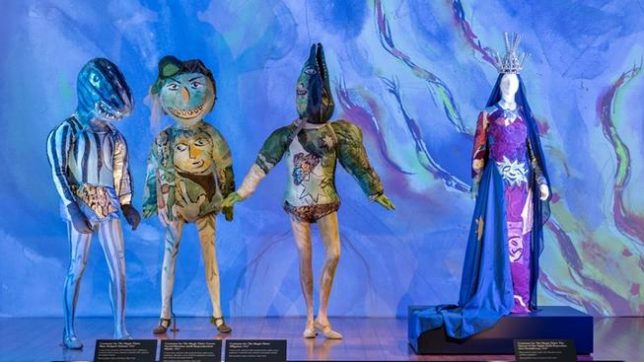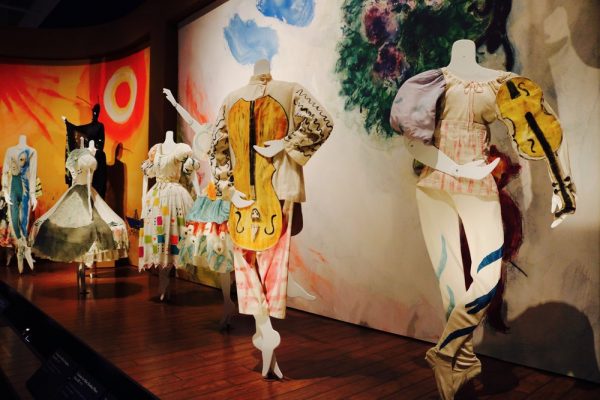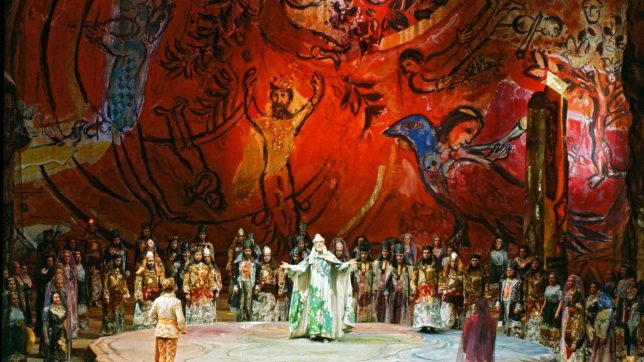
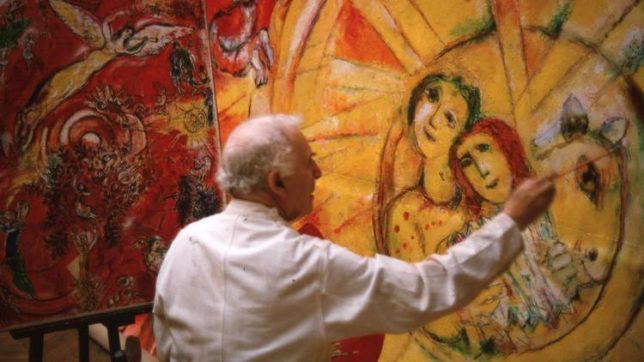
As a child growing up in the Hasidic Jewish enclave of Vitebsk, Russia, Marc Chagall aspired to be a singer, dancer, violinist and poet. Reflecting the desires of his youth, the artist often depicted musicians and performers in his paintings. His set designs and costumes from four theatrical productions – the ballets Aleko, The Firebird and Daphnis and Chloé and the opera The Magic Flute– are the subject of the exhibition Chagall: Fantasies for the Stage currently at the Los Angeles County Museum of Art. The show was adapted from a presentation at Montreal Museum of Fine Arts by LACMA’s Stephanie Barron and the costume and textiles department. After fleeing Nazi-occupied France with his family, Chagall received a commission from the Ballet Theatre of New York- now American Ballet Theatre- to create the scenery and costumes for Aleko. Based on an 1824 poem by Alexander Pushkin, the ballet premiered in Mexico City and later at the Hollywood Bowl in summer 1943.
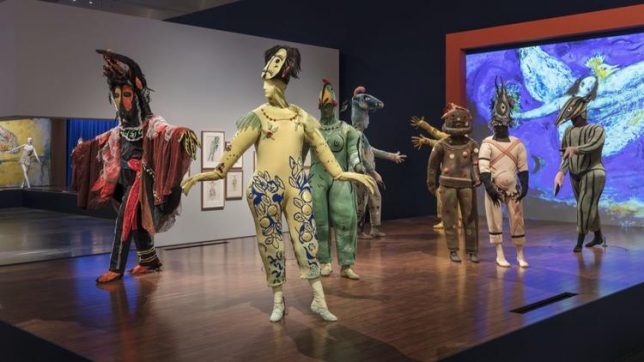
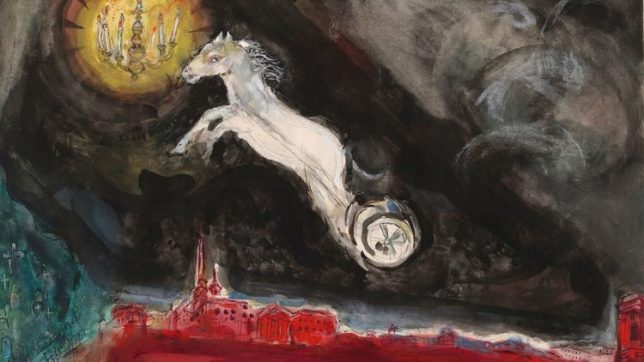
“At this point he was actually hand-painting on the fabric for the costumes,” Barron said. His designs for Aleko mixed traditional Mexican styles with Russian folklore. For the 1945 production of Igor Stravinsky’s The Firebird, at the Metropolitan Opera House in New York and the Shrine Auditorium in L.A., Chagall envisioned more experimental and avant-garde designs, opting for heavy, richly colored fabric and intricate embroidering. The LACMA exhibition encompasses 145 objects including 41 costumes, more than 100 sketches, reproductions of original backdrops and projections, and rare 1942 film footage of Aleko. Yuval Sharon of the experimental L.A. opera company the Industry and Jason H. Thompson designed the exhibition. “The designs we’ve done come out of Yuval’s desire to activate the costumes so that people have the sense of what it’s like to see them in the theater,” Barron said. Through January 7, 2018
